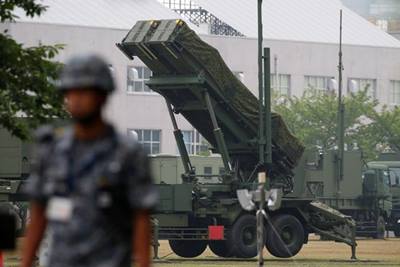Budgetary allocations for ‘national defence’ (popularly known as the defence budget) for FY18 have been presented in the Parliament. Total allocations (money spent on the Indian military and related agencies/overheads like DRDO, Ordnance Factories and defence pension) stand at Rs 3,59,854 crore. The defence services will receive R2,74, 114 crore for their annual expenses (out of which revenue expenses will be R1,82,534 crore, which will be largely spent on pay and allowances and other costs like transportation, stores, works, etc.; while capital expenses for both fresh purchases of military assets as well as payment toward signed contracts, known as ‘committed liabilities’, will receive R86,488 crore). A further R85,740 crore will be spent on pension for defence forces.
Allocations for national defence constitute about 12.8% (excluding pensions) and 16.76% (including pensions) of the total central government expenditure (pegged at R21,46,735 crore for FY18). In percentage terms, revenue and capital expenditures account for 65% and 35%, respectively. Compared to last year, there is only a marginal increase of 5.6% in overall terms in allocations. Revenue expenditure, predictably, has increased substantially, while there is a marginal increase in capital allocations (although increased roughly by 18% from previous year’s revised estimate, which is largely attributable to ‘unspent syndrome’). Consider this: capital expenditure was budgeted at R78,585 crore in FY17; which was subsequently revised to R71,700 crore for the same year; and this year it has been increased to R86,488 crore.
You may also like to watch:
[jwplayer 2E5zwJgE]
If one compares between two budget estimates (2016-17 and 2017-18), one gets a lesser percentage, while compared between this year’s budget estimates (BE) and last year’s revised estimates (RE), one invariably gets a higher percentage increase in capital expenditure. The same is not true in case of revenue side. Seventh Pay Commission and OROP will add to revenue expenditure, which is visible in this year’s BE and last years RE (BE at R1,43, 869 crore and RE at R1,49,051 crore for FY17). It is further visible in this year’s revenue expenditure. Trends show that revenue—capital ratio have fluctuated any thing between 65:35 and 56:44 in the past ten years, which suggest that attempts at minimising revenue and maximise capital expenses to the level of a desirable 50:50 have largely been unsuccessful despite noble attempts.
Beyond budgetary data, comparative and trend analytics, three fundamental questions elude us all the time:
– How much resources are needed for national security and is Indian spending adequate?
– Can Indian military enhance its qualitative capability through allocated resources?
– Last but not the least, can major elements of self-reliance be achieved?
Dozens of related issues are indeed embedded into these larger questions and given the ubiquity and complexities associated with the larger issues of national security, it is difficult to arrive at definitive assessments.
I advance a set of arguments, subject to further debate, on the questions raised above. First, data related to both puristic-narrow and broader resources allocations suggest that India is actually spending reasonably on national security. Puristic-narrow prism focuses only on resources for MoD, while there are other establishments like Home Affairs (MHA, which gets resources for police and para-military forces) catering to internal security responsibilities and departments of space and atomic energy catering indirectly to larger national security objectives. Many civilian sectors also factor in resources for strategic necessities. While national defence domain accounts for more than 16% of total expenditure, others contribute at least another 8-9% (although exact figures, except for MHA, are not available). Taken together, allocations toward national security roughly account for a quarter of national resources. This is reasonable to say the least.
My second argument is: reasonable allocations, if deployed pragmatically, can bring in qualitative dividends and thus enhance military capabilities. Imbalances in revenue and capital allocations, favouring the former primarily due to pay and allowances as well as pension, need further fine-tuning. This can happen when the government takes a decision to right-size the armed forces as well as tweaking finer nuances of other revenue items on the one hand and executes capital acquisition contracts in time. Purely from data sources, consider this: revised revenue expenditure for FY17 was up by R6,000 crore, while capital expenses was down roughly by R7,000 crore! Defence minister Manohar Parrikar, thus, has an enormous task in his hands as to how to address these contentious issues.
My last (but certainly not the least) argument is: although it appears a tall order and an arduous journey, India does not have any other option but to be self-reliant in military industrial capabilities. This is the only way to reduce ‘arms import syndrome’. Allocations thus must emphasise incentives for defence industries, especially for the small and medium enterprises.
Deconstruction of perceptions on national security should commence so that tax payers must know where hard earned resources of theirs are directed.
The author is a New Delhi based strategic affairs analyst

